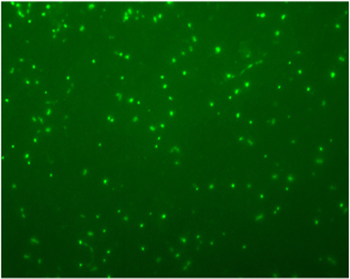The most abundant freshwater bacterioplankton is one that researchers have been unable to grow for study in the lab, away from its natural habitat. The acI Actinobacteria make up as much as 50 percent of the plankton in freshwater lakes and rivers all over the world but researchers don’t know exactly what ecological role the bacteria play and how they influence the carbon cycle. Researchers have also noticed that the bacterial population seems to increase when algal blooms or leaf little are present in the water, so they think that bacteria might have enzymes that can break down plant cell walls.

Photo: Fluorescence in situ hybridisation (FISH) image of acI Actinobacteria in water
from Lake Geirneggsee, Austria, Courtesy of Raju Sekar
To solve the problem of acquiring and cultivating a sample of acI Actinobacteria for study, researchers intend to apply single cell sequencing techniques. As long as they have a viable single cell of the bacteria, the tiny DNA sample can be amplified enough that the genome can be sequenced. The single cell sequencing technique has been applied to other microbes before, leading to high-quality draft genomes that are only partially complete. The researchers hope that the acI Actinobacteria will become the first organism whose full genome was determined by using single cell sequencing techniques.
Principal Investigators: Falk Warnecke (DOE JGI)
Program: CSP 2009